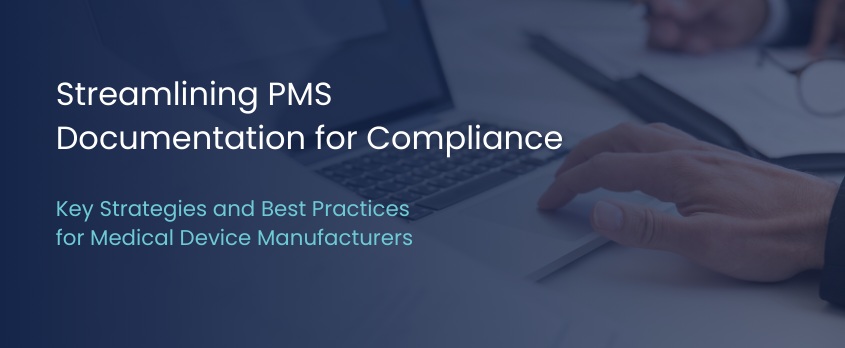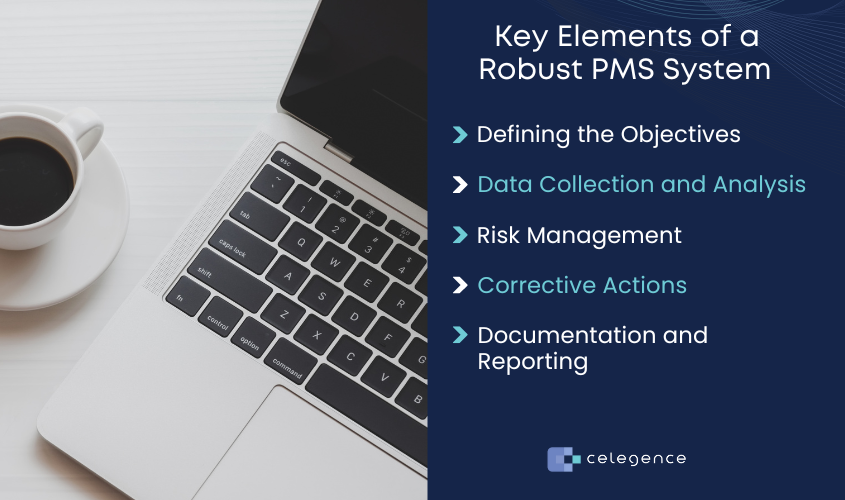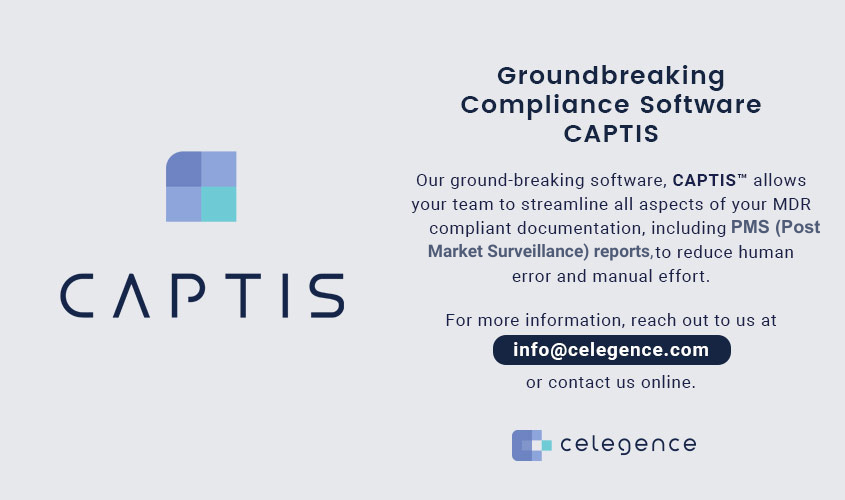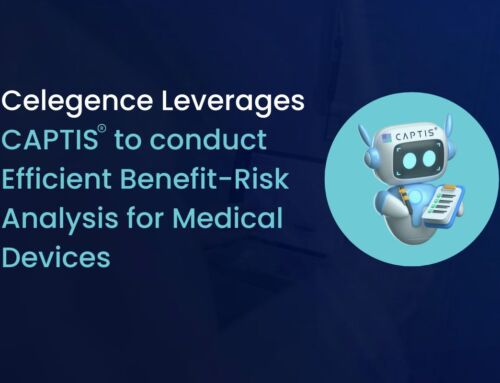
Mastering Compliance: Essential Insights into PMS Documentation
Enhancing Medical Device Safety Through a Proactive PMS Approach
The journey of a medical device from conception to market release is rigorous and thoroughly regulated. However, the responsibility of manufacturers extends far beyond the initial launch. Post-Market Surveillance (PMS) is essential to continuously monitor the safety and efficacy of medical devices once they are in use. This surveillance is crucial for detecting any potential device malfunctions or adverse events early, ensuring patient safety, and maintaining regulatory compliance.
A recent expert-led webinar shed light on effective strategies for PMS documentation, providing vital insights for manufacturers. By integrating these expert insights, manufacturers can not only comply with regulatory demands but also significantly contribute to the overall well-being of end-users.
This series will provide you with the tools and knowledge needed to maintain the highest standards of safety and efficacy for medical devices throughout their lifetime.
Developing a Strategy for PMS Compliance
Understanding the regulatory framework that governs the PMS is the first step towards effective compliance. Regulatory bodies across the globe have set forth specific guidelines that dictate how medical device manufacturers should monitor their devices after their launch on the market. These regulations ensure that any potential risks associated with medical devices are identified and mitigated in a timely manner.
Familiarity with these regulations is crucial for manufacturers to not only adhere to legal requirements but also to maintain the trust of healthcare providers and patients. The EU MDR and the guidelines provided by entities like the FDA in the United States, MDCG and IMDRF in Europe, and other international bodies outline clear expectations for ongoing surveillance, reporting requirements, and the necessary corrective actions when issues are identified.
Key Elements of a Robust PMS System
- Defining the Objectives: The objectives defined should be specific to gather data for the indication of the device and should also focus on device variants/combinations, if applicable.
- Data Collection and Analysis: Continuous data gathering from real-world use allows for ongoing assessment of the performance of the device. This includes analyzing customer feedback, clinical data, and reports of adverse events.
- Risk Management: Integrating PMS data into the risk management strategy is vital. This helps in updating the risk assessment as new information becomes available, ensuring that the risk management measures are always aligned.
- Corrective Actions: The system must include mechanisms for prompt response and implementation of corrective actions when risks are identified. This could involve recalling the devices, issuing safety notices, or modifying device usage guidelines.
- Documentation and Reporting: Maintaining detailed records of all surveillance activities and findings is essential. These documents support regulatory compliance and can be presented as evidence for continued safety and performance of the device during audits by regulatory authorities.

Streamlining PMS with Automation
Incorporating automation into PMS processes can significantly enhance efficiency and accuracy. Automation technologies are designed to handle repetitive and time-consuming tasks, allowing PMS teams to focus on more critical aspects of device surveillance such as analysis and decision-making.
Automated systems can track large volumes of data across various sources in real-time, providing immediate insights into device performance and potential safety issues. Additionally, automation reduces human errors and increases the reliability of the surveillance process, ensuring that all regulatory requirements are in compliance with the regulations.
Software Solution for Enhanced Precision and Productivity
Advanced software solutions, such as CAPTIS, play a crucial role in modernizing the PMS systems. Such tools are specifically designed to manage the complexities associated with the surveillance of medical devices.
Advantages of using a specialized tool like CAPTIS:
- Centralized Data Management: CAPTIS serves as a repository of data from multiple sources on a single platform, making it easier to review, monitor and analyze information related to device performance and safety.
- Effective Collaboration: The teams can collaborate in an effective manner using CAPTIS, eliminating any communication gaps amongst the project team.
- Enhanced Reporting Capabilities: CAPTIS automatically generates regulatory reports based on the collected data, simplifying compliance and reducing manual processes and the workload on medical writers.

Managing Feedback from Notified Bodies
Engaging constructively with regulatory bodies is vital for any medical device manufacturer. Notified bodies provide crucial feedback that can guide manufacturers in maintaining high safety and efficacy standards for their devices. Effective management of this feedback is important for the medical devices to maintain regulatory compliance and patient safety standards.
Integrating Post-Market Clinical Follow-up (PMCF) into PMS
Post-Market Clinical Follow-up (PMCF) is a critical component of Post-Market Surveillance (PMS) that ensures ongoing evaluation of medical devices in real-world use. PMCF aims to continuously assess the safety and performance of devices, gathering valuable clinical data that complements pre-market evidence. This continuous monitoring is crucial for detecting any potential issues that may arise once the device is widely used.
Strategies for Effective PMCF Implementation
Implementing a robust PMCF plan involves several strategic steps. Firstly, it’s essential to define clear objectives aligned with regulatory requirements. Companies should develop detailed PMCF protocols that outline methodologies for data collection, analysis, and reporting. Utilizing real-world data sources, such as patient registries and electronic health records, can enhance the quality of clinical evidence gathered.
Overcoming Challenges in PMCF
Despite its importance, PMCF implementation can face various challenges. These include engaging clinical sites, ensuring patient follow-up, and managing large volumes of data. Effective communication with clinical partners and leveraging technological solutions can mitigate these challenges. Moreover, integrating PMCF activities with broader PMS processes ensures a comprehensive approach to post-market surveillance.
Benefits of a Strong PMCF Program
A well-executed PMCF program provides numerous benefits. It enhances patient safety by identifying and addressing potential risks early. Additionally, the data obtained from PMCF can support regulatory submissions, inform product improvements, and strengthen market confidence. This proactive approach to post-market surveillance ultimately contributes to better patient outcomes and device reliability.
Adapting to Evolving PMS Requirements
In the dynamic field of medical device regulations, medical device manufacturers should stay informed about the latest changes in PMS requirements. Regulatory landscapes evolve as new medical technologies emerge and as more is understood about the existing ones.
Effective tools for remaining adept amid regulatory changes
- Subscribing to Regulatory Newsletters: Many regulatory bodies and industry groups publish newsletters regularly that detail the latest changes in guidelines and standards.
- Knowledge Gathering via Webinars and Technical Blogs: The webinars and technical blogs are valuable resources for expanding knowledge and staying abreast of emerging trends and technologies in the industry.
- Participating in Industry Conferences: These events often feature sessions on regulatory changes and best practices, providing insights directly from regulators or leading industry experts.
- Regular Training Sessions: Conducting regular training sessions for compliance and regulatory affairs teams ensures that the entire organization stays informed and ready to implement necessary changes.
Modifying Processes to Align with Expectations from Regulatory Bodies
Adapting business practices to meet evolving regulatory requirements is essential for continuous compliance and market success. As the expectations of the regulatory bodies change to accommodate new technologies or respond to new health data, manufacturers must be agile in adjusting their strategies and operations.
Strategies for aligning practices with requirements and expectations
- Regular Review and Revision of PMS Processes: Continuously evaluate and update surveillance protocols and processes to ensure they meet current regulatory standards.
- Leveraging Technology for Compliance: Implement software solutions that can be configured to adapt to new regulatory requirements, ensuring continuous alignment with best practices.
- Engaging with Regulatory Consultants: Working with experts who specialize in regulatory compliance can provide insights and guidance on implementing the changes efficiently and effectively.
Key Takeaways for Achieving Compliance
To conclude, the webinar covered aspects such as understanding the regulatory framework, building an effective strategy for PMS compliance, incorporating advanced technological solutions, navigating feedback from the regulatory bodies, and staying agile in the face of new regulatory requirements, these insights are invaluable for any medical device manufacturer aiming to enhance safety and efficacy of their medical devices.
Additionally, the webinar highlighted the critical role of Post-Market Clinical Follow-up (PMCF) in ensuring continuous evaluation of devices through real-world clinical data, strategies for effective PMCF implementation, overcoming challenges in PMCF, and the benefits of a strong PMCF program.
Implementing these strategies proactively will not only help in meeting the stringent requirements set by the regulatory bodies but also in fostering a culture of continuous improvement and innovation. By embracing these best practices, manufacturers can ensure that their medical devices continue to serve the needs of patients safely and effectively, while also adapting to the ever-changing landscape of medical device regulations.
Celegence, led by Sonia Veluchamy is more than a regulatory consulting firm. We are a strategic partner specializing in EU MDR and IVDR requirements, ensuring they are efficient, accurate, and compliant.
Celegence is here to help with our expert solutions and advanced AI technology. Contact us or reach out to us at info@celegence.com to learn more about how Celegence could be your partner.


